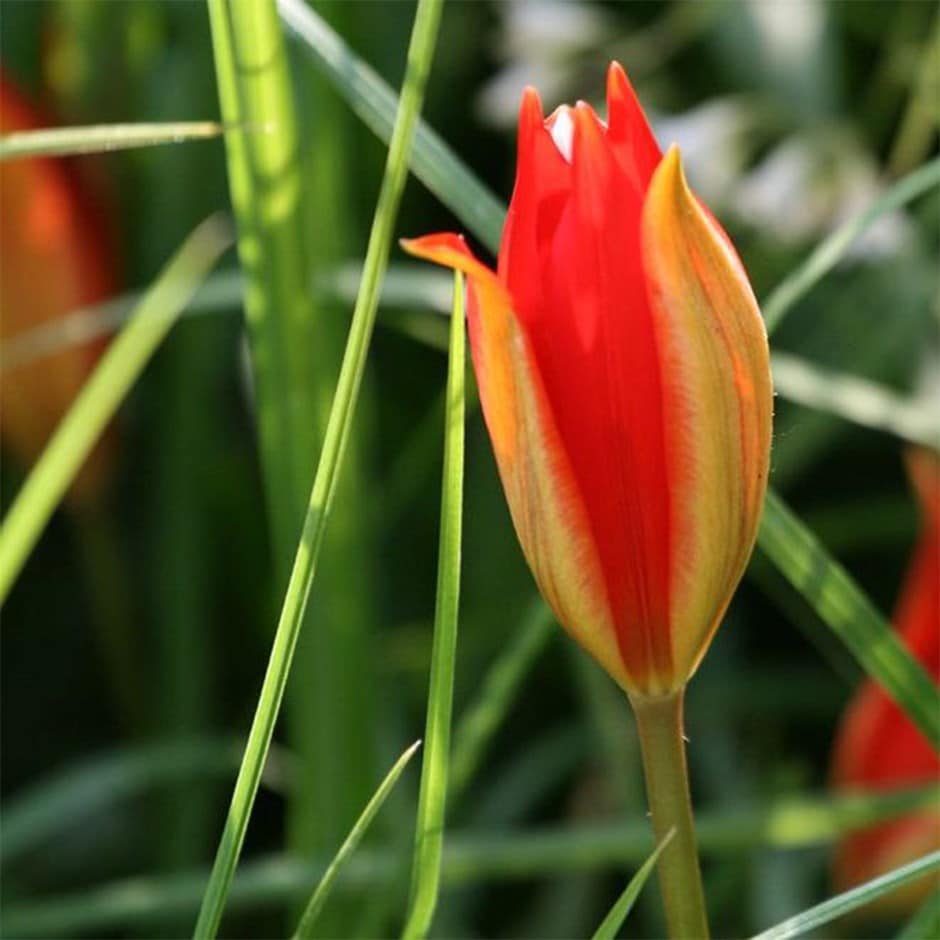Tulipa sprengeri
Sprenger species tulip
- approx 25 seeds
- £4.24 £4.99
- In stock (shipped within 2-3 working days)
Delivery options
- Seed Packets (only) £2.99
- Position: full sun
- Soil: moderately fertile, moist but well-drained soil, or general-purpose potting compost for containers
- Rate of growth: average
- Flowering period: May to June
- Hardiness: fully hardy
One of the latest tulips to flower, this species tulip adds a welcome splash of colour to early summer displays. Its scarlet, gold-accented goblet-shaped flowers with pointed petals appear in late May or June, standing above upright, glossy green leaves. Tulipa sprengeri is a bulbous perennial that prefers full sun and well-drained soil, thriving best where it can remain undisturbed.
Though slow to reach flowering size from seed or young bulbs, it will naturalise over time if conditions suit. It may self-seed lightly in gravel or borders if left to set seed. Due to its rarity and limited supply, bulbs are often costly, but its elegance and late flowering time make it a standout addition to bulb collections and naturalistic plantings, so it is worth the wait and cost in growing from seed.
Though slow to reach flowering size from seed or young bulbs, it will naturalise over time if conditions suit. It may self-seed lightly in gravel or borders if left to set seed. Due to its rarity and limited supply, bulbs are often costly, but its elegance and late flowering time make it a standout addition to bulb collections and naturalistic plantings, so it is worth the wait and cost in growing from seed.
This species tulip is adaptable for pot and border culture, as well as naturalising in meadows and wildflower schemes. Using fresh, good-quality compost. For borders, these tulips have some resistance to Tulip Fire. Once mature, and in spring, when the potted or border tulips are in active growth, apply a high-potash fertiliser (like Tomorite) each week until the leaves start to die back. Pinch off the spent flower heads as the petals fall, and let the stem and foliage die back naturally. Unlike border/bedding tulips, species tulips can be left in the ground to flower in situ year after year.
If planting in a meadow in order to naturalise, make sure the grass is not cut until the foliage has completely died back.
If planting in a meadow in order to naturalise, make sure the grass is not cut until the foliage has completely died back.
Use deep pots or trays with a gritty, free-draining compost mix. Sow the seeds thinly on the surface and cover very lightly with a fine layer of compost or grit—just enough to barely cover them. Keep the trays in a cold frame or unheated greenhouse, exposed to natural weather fluctuations.
Germination can be slow and erratic, often taking several months to over a year. Once seedlings emerge, grow them on in pots for a couple of years before planting out, as they take time to bulk up and reach flowering size. Do not allow young seedlings to dry out completely.
Germination can be slow and erratic, often taking several months to over a year. Once seedlings emerge, grow them on in pots for a couple of years before planting out, as they take time to bulk up and reach flowering size. Do not allow young seedlings to dry out completely.
- Humans: Harmful if eaten; skin allergen; Pets: Ornamental bulbs - not to be eaten


